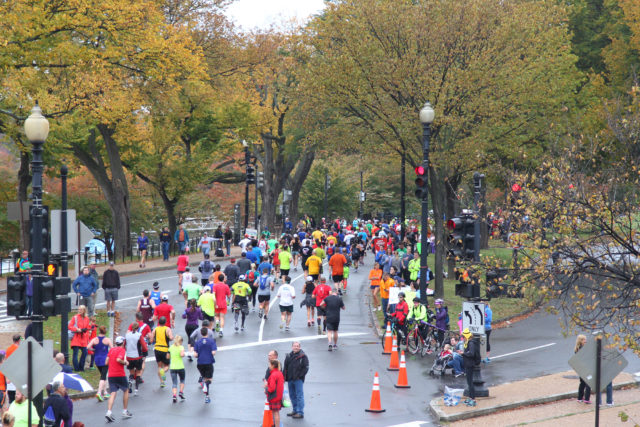
Running the Straight and Narrow
As I write this, Marine Corps Marathon training is reaching its zenith. The calendar holds just a few more weeks for hard training.
And by the time you read this, you’ll be tapering. It could even be race week, your thoughts shifting to smaller details.
It used to be about how far and fast you’d run on Sunday. Now it’s about little things on race day like how to hold your gels and what shoes to wear. It’s about the defining question of the 41st People’s Marathon: Uber or Lyft?
How the course got this way
But I’m still hung up on a detail from last year, a detail that, when the howitzer fired, was as far away from my mind as the finish line: tangents.
It’s a post-GPS watch realization for me — and my run last year at MCM proved it — that I do a very poor job minimizing the distance I cover on the course.
In other words I’m realizing how important it is to study more than where the hills are and where they aren’t. After all the time invested in training, I should also be studying the turns and curves, amassing the knowledge — or at least the awareness — of how to only run 26.2 miles.
It takes an hour to get here from Washington, D.C.
You head north on Interstate 270, pass by the main exits for Frederick and continue onto U.S. Route 15. Catoctin Mountain comes into view. And as Cactus Flats Roadhouse passes by on your left, be on the lookout for your exit: Mountaindale Road.
You wind down through fields, passing by Mountaindale Convenience Store. When you have to choose right or left, choose left, and continue on what is still Mountaindale (Putnam Road is to the right). If you start seeing log cabin-inspired homes and the Cold Deer Hunting and Fishing Club, you chose correctly, and are almost there.
A warm day for marathoners can be pleasant for spectators, at least. But the weather in Los Angeles for the last Olympic Marathon Trials wasn’t good for anyone: A combo of high temperatures and noontime sun made it hurt just to be outside. My favorite spot to watch the race was in the shade beneath an overpass.
Which is why I’ll never forget the first time I saw my friend Kieran O’Connor pass by me.
His top-10 American finish at the brutally hot 2012 Boston Marathon proved he had the ability to thrive in tough conditions. But what I saw still feels almost unreal to me.
It was early in the race and athletes already looked delirious. Kits were soaked. Sweat was flying off hair.
And there was O’Connor, cruising along, beard dry — cool, collected and completely in the zone, an athlete seeded 145th on his way to a 24th-place finish in 2:21:37.
Reading Charlie Ban’s post-race article, the quote from O’Connor that brings me back to that moment is this one:
“I knew I just had to keep grinding for six more miles. There’s nothing else I had to do, just keep grinding. With about three miles to go, I thought, ‘I just have to finish up this loop and I can go home and see my daughter.‘”
Kyle Stanton was showing us how it’s done. His Strava posts that fall of 2017 revealed a true disciple of Renato Canova marathon training. It was a training log leaving little doubt that a breakthrough was coming.
Like his Nov. 12 post titled 20 Hard. 3 Weeks. Twenty hard, as in 20 miles at the natural surface Dual Ferries loop, solo, averaging 5:25. Three weeks, as in Stanton wouldn’t have to wait much longer before achieving his goal at that year’s California International Marathon.
True to form, Stanton, then 26, ran 2:17:48, a sizable P.R., to finish 28th overall and qualify for the 2020 U.S. Olympic Marathon Trials.
Then, in July 2018, the lights went out. The title of Stanton’s last Strava post — his last run — read like this:
Stanton had been doing rehab work in an attempt to solve compartment syndrome. It’s a difficult and confusing injury to address, Stanton said, in that it typically requires some combination of lots of time off in addition to a surgery followed by a long recovery. That night, Stanton ran from his house in Rockville to a nearby middle school to try some short intervals. “And I did two or three of them,” he said, “walked back off the track, walked back in and never put the flats on again.”
Stanton shared later in our phone call: “So someone asked me, ‘How’s your calf?’ And I was like, ‘What are you talking about?’ I forgot that was why I initially stopped running.”
Seeing a female runner in that country was rare, something Nina hoped to change.
These words come from Maggie Lloyd’s 2016 RunWashington remembrance of Nina Brekelmans, a runner, scholar and activist who was killed four years ago in an apartment fire near Dupont Circle.
As Lloyd noted in her article, Nina’s story “is still far from complete.” But thanks to family members, friends and supporters, Nina’s vision is indeed moving forward.
In Amman, Jordan, where she had studied, Nina envisioned empowering young women through running. That’s happening today, as last month, a fourth annual camp and race named in her honor culminated with record participation.
As the Nina Brekelmans Memorial Foundation, Fulbright U.S. Student Program, and Jordanian partners gear for their 5th season, a fundraising event for the camp and race will be held in partnership with Pacers Running and RunWashington.
Experience a joyous evening featuring appetizers and drinks, raffles and silent auction items ranging from Nationals tickets to yoga classes and entries to the Credit Union Cherry Blossom 10 Mile Run. All proceeds will benefit the Nina Brekelmans Memorial Foundation and its programs supporting young female runners and refugees in Jordan.
Register: http://ninabrekelmansmemorial.org/dc19
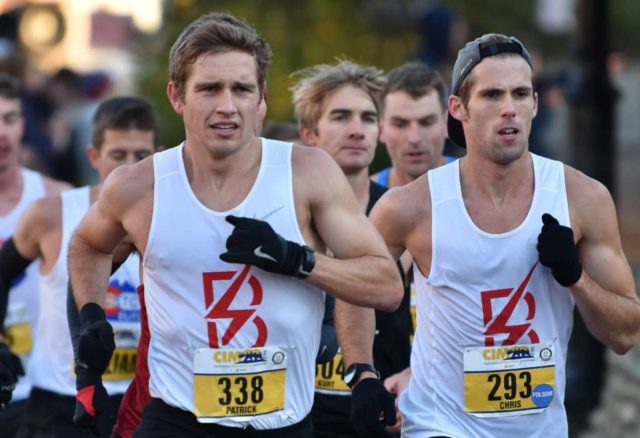
Less than a week ago, Patrick Reaves was on the starting line – and on the list of “Olympic hopefuls” – for an eight-mile race in Atlanta. This was a special event held to preview the course for the U.S. Olympic Marathon Trials, now less than a year away.
Reaves’s result will tell you that he ran 42:14, 5:09 pace, to finish 33rd, and that he lives in Portland, Ore. What it will not tell you is that the 34-year-old runner was actually racing in his hometown, the city where he ran his first marathon as a 19-year-old club runner at the University of Maryland.
Post-race
Reaves sprained his left ankle inthe second mile and ran the rest of the race uncertain of whether it was broken. He finished 140th in 2:30:25.
And while his result indicated — and Reaves himself will confirm it — that a fellow Nike athlete, and three-time national cross country champion, Chris Derrick, tagged along doing a tempo, it will not tell you that Reaves is a professional in the more traditional sense. He’s not paid to run; instead, he’s paid to guide Nike’s social impact strategy, a position that connected him to Bowerman Track Club’s elite corporate team when he and his wife, Valerie, moved to Portland in 2014.
Reaves’s result also will not tell you how he earned the opportunity to be on the starting line: how, in December, at the California International Marathon (CIM), his half marathon split of 1:08:47 was a personal best. He then nearly PRed again, covering the back half only six seconds slower.
This is how Reaves chopped approximately six minutes from his personal best to clock 2:17:40 and beat the sub-2:19 men’s qualifying standard for the trials. Now he’s a year away from competing in the event back in his hometown where his marathon journey began.
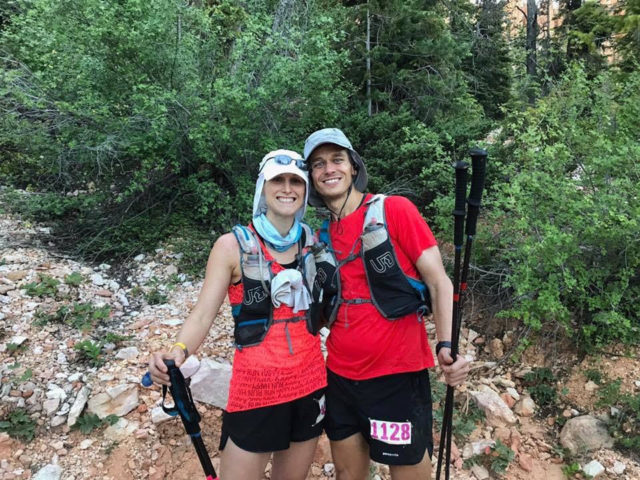
Update: Of the 14 local-ish Western States entrants, 13 finished, led by Jared Byrd’s 22:09:10.
Last year, my sister, Sarah Mercer-Bowyer, graduated from veterinary school in Southern California. She then accepted an internship at an equine medical center in Northern California. This required Sarah and her husband, Greg, to move.
I have a feeling, though, that Sarah didn’t have to twist Greg’s arm.
Their new home is in Auburn. It’s a town of 13,000, founded by gold miners, located approximately 35 miles from Sacramento, and it’s a great place for them to live.
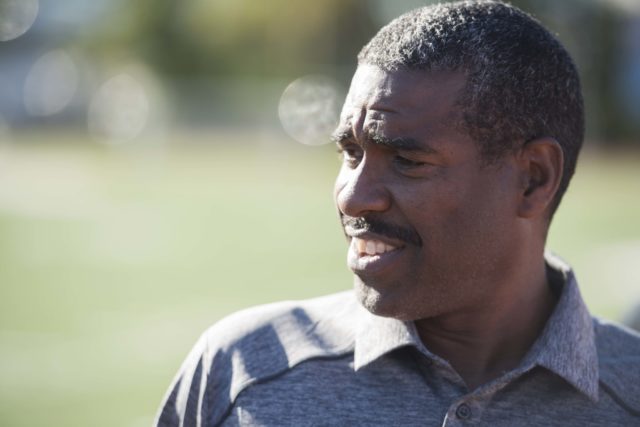
The Working Man
Darrell General is used to operating on a tight schedule. Thirty years ago, when he qualified for his first of five U.S. Olympic marathon trials at the Marine Corps Marathon, General was training hard and working harder at multiple jobs. Today, General, 51, is right on time for a 4 p.m. interview for the Pace the Nation podcast. As long as we get this done in 45 minutes, he’ll still have enough time to drive over to George Marshall High School in Falls Church, Va. to set up a cross country course for tonight’s pre-season time trial. General has been head coach there since 2002.
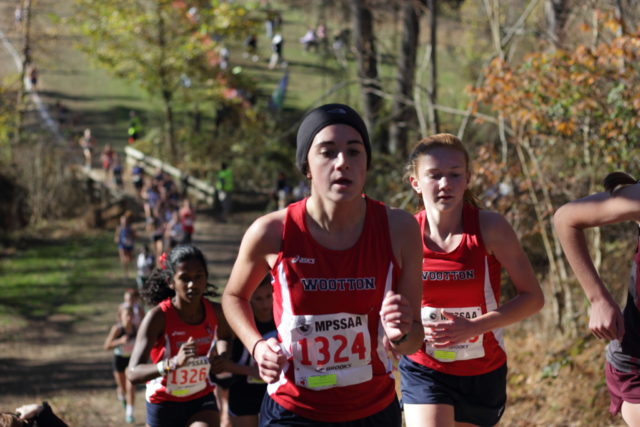
Abbey Green came up just short in her latest attempt to win a Maryland state cross country title, a rematch with Annapolis senior and 2015 Footlocker finalist Maria Coffin. Yet in the end, the Walter Johnson junior said she could not have scripted the race much more perfectly.
Maryland Athletic Association Championships
Nov. 12, 2016 – Hereford High School,
Parkton, Md.
In the state 4A race at legendary Hereford — a three-mile cross country venue so tough, they say, even Centro couldn’t break 16 minutes — Green and Coffin left 152 other harriers far behind in becoming the first two girls to cover the course in less than 18 minutes.
Even as Coffin broke free of Green in the final mile, maintaining a small lead up the race’s final hill, Green’s stride was still strong. It looked for a second like she might even rally. And after crossing the line in 17:54, five seconds back of Coffin, her repeat runner-up complete, Green took some time to catch her breath before walking back towards the finish – again, like last year, waiting eagerly for her teammates to join her.
Katrione Kirsch was the first to come through, placing 7th in 19:38. Then came Sadie Keller, Janet Scott, and Sophia Scobell, all finishing in the top 25 positions as Walter Johnson claimed its fourth 4A title in a row.
“You can just see it in their faces coming in,” Green said. “They’re just pushing, trying to get every last girl that they can get. They’re all just really fighting for each other and for what we’ve worked really hard for.”
Asked about her own effort, even then Green led with more praise for others. “I think Maria should be so proud that she got the course record on her last run here. “[And I’m proud of] myself that I was able to get a much better time than I did last year. That was my goal coming into here.”
Winston Churchill Senior Julia Reicin led the chase, finishing 3rd in 19:06. Paint Branch junior Yasmine Kass was 9th in 19:43; Northwest had the top freshman in Helena Lee, who was 12th in 19:54.
Meanwhile, sophomore Jessica Trzeciak, in 6th, led T.S. Wootton to a runner-up finish, the team’s highest ever, said coach Kellie Redmond.
Heading into today’s championships, Sophomore Madeline Grainger was the team’s only athlete who had ever even run at Hereford. She had qualified last year as an individual as injuries ravaged her teammates.
Today, Grainger was Wootton’s No. 4, placing 27th overall in 20:46. And while Wootton had put up a stronger 2nd place showing in the Montgomery County meet, Trzeciak, the team’s top runner, ended up placing higher in the state meet, proving Redmond’s point that her team has been “progressively better all season.”
“We knew we’d have some strong competition but we executed the race plan exactly as planned,” Redmond said. “They ran great, they ran tough, and they were super inspired beforehand.”
In the 3A race, Nandini Satsangi paced Poolesville to a fifth place showing. It wasn’t the result that the team was hoping for, or the result that Sandini, who had the fastest seed and finished 9th, would have envisioned after winning her regional meet by nearly a minute. No one, however, should think Satsangi had an off day. Rather, it was a gutsy effort.
The Friday after regionals, Nandini irritated a tendon in her foot, she said. She did not run at all between then and the state meet and wasn’t sure if she would be able to complete today’s race. She never doubted, on the other hand, that she would try.
“It was the last race of the season … and it’s states,” she said. “I was just going to go all out.”
Nandini, as it turns out, was going to have to spend some time in the pool, anyway. Her next season isn’t indoor track; it’s swimming.
Boys’ races
Hereford’s rarely broken 16-minute mark went down in the 1A race when Smithsburg senior Will Merritt ran 15:54. But 4A champion Rohann Asfaw (16:04) and 3A winner Ryan Lockett (16:00) were close. Lockett, a Poolesville junior, was runner-up to Richard Montgomery senior Asfaw at the Montgomery County meet.
In winning a state title, Lockett demonstrated some playful swagger, celebrating in his final steps by taking his left hand and pointing at his right forearm like NBA star D’Angelo Russell – “ice in my veins,” said Lockett, who coincidentally also wore long shorts.
“Honestly, I knew that I could outkick anyone at the end, so I was pushing the pace,” said Lockett, who ran neck and neck with River Hill Senior Rahul Reddy into the final straight (Reddy finished two seconds back).
Lockett was joined in the lead pack by senior teammate Andrew Lent, whose 4th place 16:12 was a considerable improvement over his first appearance at the state meet when he finished just inside the top 100. Poolesville finished 4th behind River Hill, Linganore, and Reservoir.
Lent said his senior-year training was jumpstarted by Lockett’s transfer to Poolesville from Gonzaga. They developed a pattern of keying off each other in races, as well. “I would come up to [Lockett]; he would see me coming and go a little faster,” Lent said.
Asfaw’s victory, though slower, was more decisive. He got out slow in the 4A race, too slow by his own standards.
“I found myself stuck in the pack,” he said. “It was a huge pack, and I had to weave my way through for the first mile.”
Even Richard Montgomery’s coach, Davy Rogers, was a little concerned initially, he said. But when he saw Asfaw coming back in the baseball field towards the famous dip, Rogers saw what he needed to be sure that Asfaw was in control: his arms were relaxed.
By the final stretch, the race was all Asfaw’s. This was even an more impressive time when considering that Asfaw is not yet tapering. He’s chasing a dream to compete at Nike Cross Nationals in December.
“It would have been great to break 16,” Asfaw said, “but I am definitely much more happy to get the win.”
Dulaney repeated as boy’s 4A champions and Northwest placed 5th, led by Junior Chase Osborne‘s 24th-place finish in 16:59. Albert Einstein junior Simeon Mussie cracked the top 10, finishing 8th in 16:42. And Bethesda Chevy-Chase junior Adam Nakasaka, mirroring his Montgomery County meet strategy, hung with Asfaw as long as he could and hung on for 2nd in 16:12. His team was sixth.
At mile two, when the pace slackened, Nakasaka even pressed forward into the lead en route to running nearly 40 seconds faster than he had as a sophomore.
“This is a state championship,” he said. “Anything can happen. That was my thinking all day.”
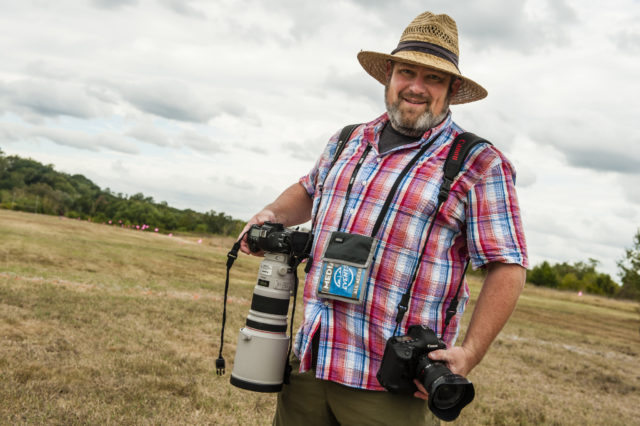
What is it about runners and photos? I lose more items than I save but I have not yet lost the photos of myself spanning my years in the sport.
Why do I keep these? It reminds me of the Joan Didion essay in which she asks herself: What kind of magpie keeps this notebook? Didion, in her way, decided it was “well advised to keep on nodding terms with the people we used to be, whether we find them attractive company or not.”
In my way I find it helpful to have a record of both the good races and bad, something I can turn to when I’m looking for answers or inspiration. That is, the good photos of those races. I guess that is where the vanity comes in: when you come home from the race, see the photo on Facebook and either untag yourself or make it your profile picture.
Digital photography brought with it the option to buy photos of ourselves crossing the finish line or on the course or looking like some wild animal in the finish chute. Race organizers working with professionals such as Swim Bike Run Photography founder Brian Knight; runner-photographers like Cheryl Young; and running club photographers like Dan Reichmann started offering race photos, too – free ones.
Their job is both artistic and physical: that of zooming, focusing, pointing, and clicking for hours on end as they try to capture not only an image – a keeper, a memorable image – of every single participant.
Meanwhile, there are photojournalists like Sarah Voisin, with The Washington Post, who encounter the running scene on occasion and put in their own long days seeking out the images that best capture the essence of what happened.
RunWashington wanted to learn more about the personalities behind the camera: things like how they approach an assignment or tackle the challenge of taking photos of people who are in fact moving while wearing weird clothes. And especially for Young and Reichmann, for whom this is an avocation, we wanted to know what keeps them coming back for more?
I was struck by something Reichmann said. He is under the impression, if you can believe it, that the “vast majority” of runners do not look at the photos he takes of them. Oh, Dan. Trust us.
They definitely look at your photos.
Sarah Voisin
They had different objectives. Elvin Funez was there to run. Sarah Voisin was there to work.
Still, Voisin says, “we were a team.” She was there, in the hours before last year’s Marine Corps Marathon, not only to get early morning photos of nervous runners huddling, twitching, focusing, relaxing, and calming themselves outside the Pentagon metro station, but to support Funez, her husband, in his fourth marathon.
Voisin is a journalist who covers all types of assignments. This year her primary assignment for the Washington Post has been to travel to Cuba to capture a new era of U.S.-Cuba relations. “I do, however, appreciate how sports assignments sharpen your focusing and response skills for documentary photography,” she says.
And when it comes to covering running, Voisin is most interested in capturing the prerace atmosphere. “I believe the best photos from any assignment, whether it is a marathon or presidential debate, always come before and after the official event,” she said.
There was the shot.
As a herd of people walked towards the starting line (you see their backs), Alexandria’s Tracy Curtis stood there, separated from the herd, facing the opposite direction, smiling, gazing, dressed “in a warm pre-race bathrobe.” Her gloves were pockets. Sunlight was in the early stages of replacing darkness. And, somewhere off in the distance, some source of bright-blue light beamed toward her, making her look angelic, as if she was planted there. What style!
“She looked so cozy and out of place,” Voisin says. “While most runners had sweatsuits and hats they discarded at the starting line, this woman looked so comfortable, like she about to make bacon and drink coffee on a Sunday morning. She looked unique, and I loved it.”
But priority No. 1 for Voisin was supporting Funez. She met him at three different points in the race. Her Fitbit recorded more than 10 miles of walking.
“According to [Funez],” Voisin said, “every time he sees me, it gives him inspiration to continue.”
Brian Knight
Knight, like Voisin, covers a variety of assignments, though he specializes in endurance sports events.
Back in 2000, Knight helped produce an adventure race in western Fairfax County. Among his many duties were serving as a webmaster and photographer. And when the race ended up spawning the adventure race group EX2 Adventures, Knight stayed onboard for another five years. Since then he has upgraded both his equipment and overall technical skills.
Knight, recalling that first race, said: “I was using one of the first Sony digital cameras that had a resolution of less than a megapixel and used a 1.44MB floppy disk for film. The camera had a nice lens, but it was slow to focus and took several seconds to take a single photo.” (Today his camera shoots 14 frames per second.)
On the skills side, Knight spent two years – what he describes as an unpaid internship – working with a photographer who specialized in covering adventure races as well as trail runs, mountain bike races, even off-road triathlons.
“I received a tremendous education in how to cover races, get the shot set up just so, and then how to cull the images down so only the best photos remain,” he said. When that mentor hung up his camera, Knight inherited some new clients and Brian Knight Photography was born. The name stuck until someone reviewing his portfolio came up with something catchier, saying “Swim Bike Run Photo has a ring to it.”
Today Swim Bike Run Photography covers some adventure races, but specializes more in road and trail races, triathlons, and, as of late, high school cross country races like the recent DCXC Invitational in Northeast D.C. Knight typically assigns one photographer to cover the finish line and post-race photo booth, a feature that has become a hit at many local races, while he gets out on the course.
Knight’s assignment is different than a journalist’s in that his job is to capture a photograph of every single participant. Some courses and events make this easier to do than others.
“For me, the easiest races are out and backs or courses that loop around,” Knight said. “If I know that I’m going to get more than one look at a racer, then the pressure is off a little. Conversely, if I only have once chance, then I might hammer away a little more at the shutter button.”
How about covering a race in freezing rain or hanging off the side of a boat in the Potomac River for the Nation’s Triathlon or sitting on the back of a motorcycle as it zooms around the course?
Typically seen wearing a big, floppy hat and lugging around an assortment of cameras and tripods, Knight can be found at events hustling around in search of the best light to capture participants (which, as it turns out, is a loaded way of describing his job).
If Knight had his choice, every race would either start or finish about an hour before sunset, ideally in the spring or fall: peak light.
“It really makes the photos pop,” he said.
The reality is that most running events start in the early morning. Oftentimes the sun is rising directly behind the finish line, “which makes it super tough to make a decent photograph.”
DCXC, though, often delivers Knight his ideal conditions. The weather for last month’s afternoon event was a bit overcast. But in the inaugural year, in 2014, “the light was this amazing golden color and the kids were running right into it.”
But perhaps his biggest obstacle is gravity.
“Gravity does weird, terrible things to the human body,” he said.
Knight does his best not post those photos on the Internet.
The child who in one frame is running – no, he is flying, with both feet off the ground – and has a big smile. In the next, though, as his feet slam back towards the ground, he looks old enough to quality for Medicare.
Or a woman who exits the water of a triathlon making a face that makes her no longer herself – now she is Sloth from “The Goonies.”
“I will never post these photos anywhere,”Knight said.
Check out Swim Bike Run Photography’s photos at www.swimbikerunphoto.com
Dan Reichmann
By now, if you run a Montgomery County Road Runners Club race, your mindset is: photos of me are part of the deal. That requires someone behind the camera, and in this case maybe that person’s son, too. Enter Dan Reichmann and his 9-year-old son, Alex.
Dan took photos at the Piece of Cake 10k in 2011 and since taken over for Ken Trombatore as MCRRC’s lead photographer.
Alex got his start two years later, at 7, the year he was strong enough to hold a camera. Dan said he had been a “hobbyist photographer” for most of his life and took to it more after digital photography made the craft more accessible and less expensive.
Though a Boston Marathon qualifier himself, Dan refers to his wife and MCRRC Racing Team member, Lisa Reichmann, as the competitive runner in the family. At an MCRRC race, Dan went to photograph Lisa and met Trombatore in the process.
Dan says he can do without the cold weather that gives him “frozen trigger fingers.” He also prefers the smaller races that “allow for more individual focus on each runner.” Approaching runners sometimes hear him wish them luck or ask them to smile.
The runners, in turn, appreciate his effort.Some thank him as they run by. They wave, raise their arms up in the air, do the click-the-heels jump, or hug their running partner.
If Dan is working by himself, he prioritizes the start and finish. When Alex or another photographer comes along, someone takes photographs out on the course, too. And for larger races such as the Parks Half Marathon, Dan assigns photographers to specific locations on the course.
Capturing every runner makes for a long day at the races. There’s yet more work to do when Dan gets home, as he uploads the photos, deletes the really bad ones, and tries to get them up on the MCRRC website as quickly as possible. But Dan enjoys the process, and the time he gets to spend with Alex.
“I just think it’s a great service and benefit we can provide our club members … I like to think [they] appreciate the effort represented by those pictures, and I like knowing I was able to provide them that shot, that photo.”
See years of MCRRC race and program photos at www.mcrrcphotos.com.
Cheryl Young
I know how you love taking photos of your running friends.
These were the words of Cheryl Young’s husband, in 2007, when he bought her a DSLR camera.
“I kind of laughed,” said Young, a dedicated member of Capital Area Runners. “I mean, I loved finding running photos of me, but okay.
Soon after was the women’s Olympic marathon trials in Boston. Young traveled there to cheer on her teammates, Kristen Henehan and Lisa Thomas, and for the first time tried her hand at photography.
“I did the same thing at the Marine Corps Marathon and it just took off from there,” she said.
Young has since taken photography classes and bought new equipment, and photography has strengthened her connection to the running community.
Before Young got into photography, an injury would have kept her on the sidelines. Or maybe not. Seeing people running would make Young miss it too much.
Now, if she is injured, Young is on the sidelines. She seizes the opportunity to cover more events.
“I would not have thought in my early days as a runner I would love being on the other side of the race, but I really do. I feel as much accomplishment seeing runners have a breakthrough performance, or even just a great day, as I do on my race days. You just know the feeling they are having; you can see it.”
Before races, Young studies course maps and looks for a nice backdrop. At the Navy Air-Force Half Marathon, for instance, she photographs runners as they enter and exit Hains Point. The sun is in the runners’ face in one direction, behind them on the other, requiring different setting. And it’s still pretty dark when the race starts. She bought a new lens, in fact, with this race in mind, and was pleased with the results.
“The groups come really fast,” she said of the half marathon. “Sometimes I’m at home looking over the photos and I see shot of people I didn’t recall during the race.”
Young tries to capture as many photos of as many runners as she can, but her main task is to cover CAR members, who run a variety of paces. “As the crowd gets thicker, it gets hard to spot many of the runners,” she said.
Sometimes her CAR runners even get photobombed (sorry, Patrick Rainey), but that doesn’t faze Young, either.
After all, she said, “How do you not love someone so excited to get their picture taken?”
See if Cheryl Young got a picture of you alongside one of her CAR teammates at www. youngrunner.smugmug.com.
This article originally appeared in the Winter 2015 issue of RunWashington.


